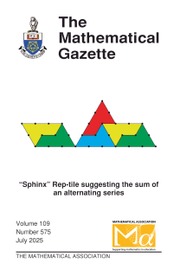No CrossRef data available.
Article contents
The trisectrix and Langley's problem
Published online by Cambridge University Press: 24 February 2022
Extract
Core share and HTML view are not available for this content. However, as you have access to this content, a full PDF is available via the ‘Save PDF’ action button.
If a circle rolls without slipping around an equal fixed circle, then a point carried by the rolling circle traces out a limaçon of Pascal. (This is Etienne Pascal, father of Blaise. The word limaçon is derived from the Latin limax, a snail.) If the fixed and rolling circles have radius 1, and the point P carried by the rolling wheel is distant a from its centre, then for a > 1 the limaçon has an inner and an outer loop, joining up at a node. For a = 1 it has a cusp, and is then a cardioid, so-called because it is heart-shaped. See Figure 1, where we have plotted the cases a =  $${3 \over 4}$$, a = 1 and a =
$${3 \over 4}$$, a = 1 and a =  $${3 \over 2}$$.
$${3 \over 2}$$.
Information
- Type
- Articles
- Information
- Copyright
- © The Authors, 2022. Published by Cambridge University Press on behalf of The Mathematical Association
References
Quadling, D. A., Last word on adventitious angles, Math. Gaz. 62 (October 1978) pp. 174–183.Google Scholar
https://www.scribd.com/doc/86809487/Angles-in-Mahatmas-s-triangle
Google Scholar
Clarke, Robert J., The return of the cotangent rule, Math. Gaz. 88 (March 2004) pp. 116–118.10.1017/S0025557200174418CrossRefGoogle Scholar


